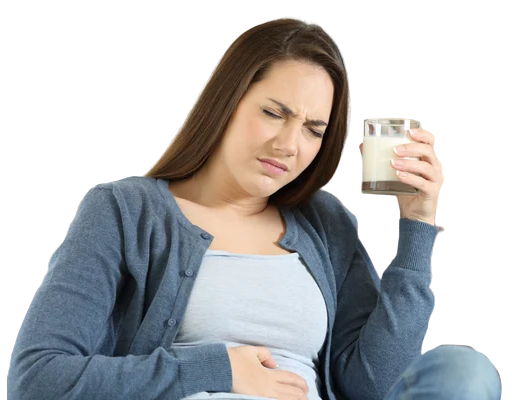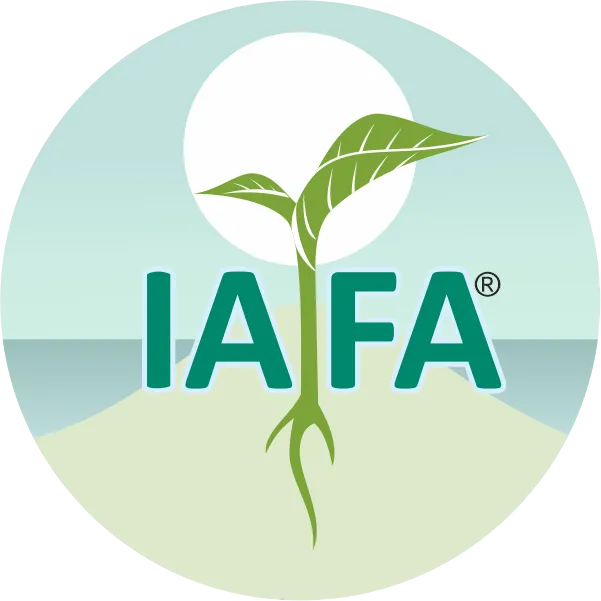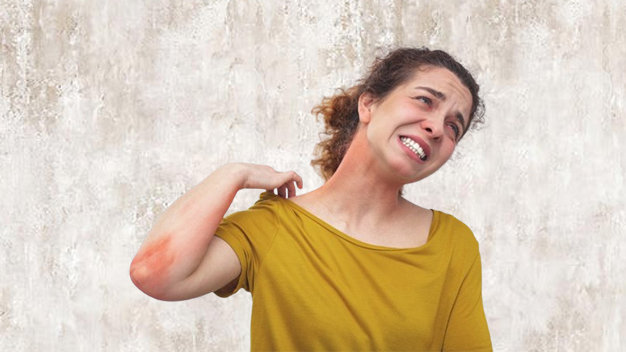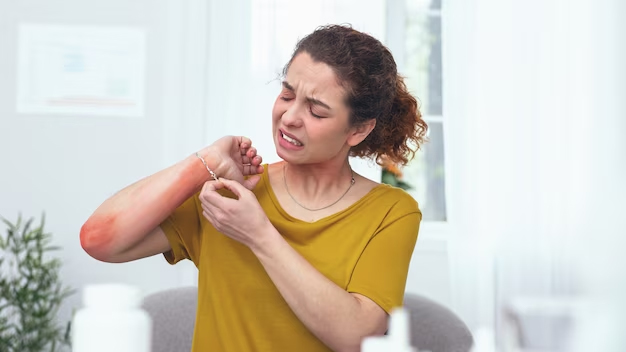On This Page
Food Additive Allergy
शीतमारुतसंस्पर्शात्प्रदूष्टौकफमारुतौ।
पित्तेनसहसंभूयबहिरन्तविसर्पत:॥ (मा.नि.५॰/१) ॥
Estimates are that 2000 to 20,000 agents are added to the food and pharmaceuticals that we consume. These include preservatives, stabilizers, conditioners, thickeners, colorings, flavorings, sweeteners, and antioxidants. The World Health Organization (WHO) defines Food additives as “substances added to food to maintain or improve its safety, freshness, taste, texture, or appearance ”Food additives include the following groups:
- Food dyes and colourings (such as tartrazine, annatto, and carmine)
- Antioxidants (such as BHA and BHT)
- Emulsifiers and stabilizers (such as gums and lecithin)
- Flavourings and taste enhancers (such as MSG, spices, and sweeteners)
- Preservatives (such as benzoates, nitrites, and acids)
Food hypersensitivity is defined as an adverse reaction to food or a food additive and can be mediated by two different mechanisms: immunologic and non-immunologic. Immunologic reactions are divided into 3 groups: IgE-mediated (allergic reactions), non-IgE mediated (cell-mediated) or both. On the contrary, non-immunologic reactions do not involve the immune system and they are also defined “food intolerances”.
In Ayurveda, symptoms of this allergic condition can be correlated with the disease entities such as Sheeta pitta, Udarda and Kotha. Various etiological factors like asaatmya ahara (uncongenial/allergenic food), viruddha ahara (incompatible food combinations), dushi visha (poisonous/allergic in nature) etc.; plays a major role in causation of these conditions Food additives can be included under either virudha, dushivisha or Asatmya ahara depending upon the patient. Various forms of urticaria, angioedema etc. allergic conditions can be correlated with Sheeta pitta, Udarda and Kotha. Sheetapitta and Udarda both are used synonymously but with a slight difference. Sheeta pitta is a vata predominant condition whereas Udarda is kapha predominant.
Causes of Food Additive Allergy
Food allergy is actually more often caused by the food itself. The most common preservatives in food causing adverse reactions are sulfites, benzoates and antioxidants. They can do so via irritant and allergic mechanisms of immune system
Symptoms of Food Additive Allergy
The spectrum of clinical manifestations is variegated. Most of the studies investigated adverse reactions to food in adult population and little is known about these manifestations in children.
Food additives can be responsible of the onset of new symptoms, ranging from mild manifestations (i.e. flushing or rhinorrhoea) to life-threatening situations (i.e. anaphylaxis), or can be the cause of worsening pre-existent diseases, such as atopic dermatitis (AD).
Reports of reactions to food additives have included the following:
- Skin reactions:
- Urticaria (hives)
- Angioedema
- Atopic dermatitis
- Sweating
- Itching
- Flushing
- Abdominal pain
- Nausea/vomiting
- Diarrhea
- Respiratory reactions
- Asthma symptoms
- Cough
- Rhinitis
- Anaphylaxis
- Gastrointestinal reactions
Ayurvedic Reference of Food Additive Allergy
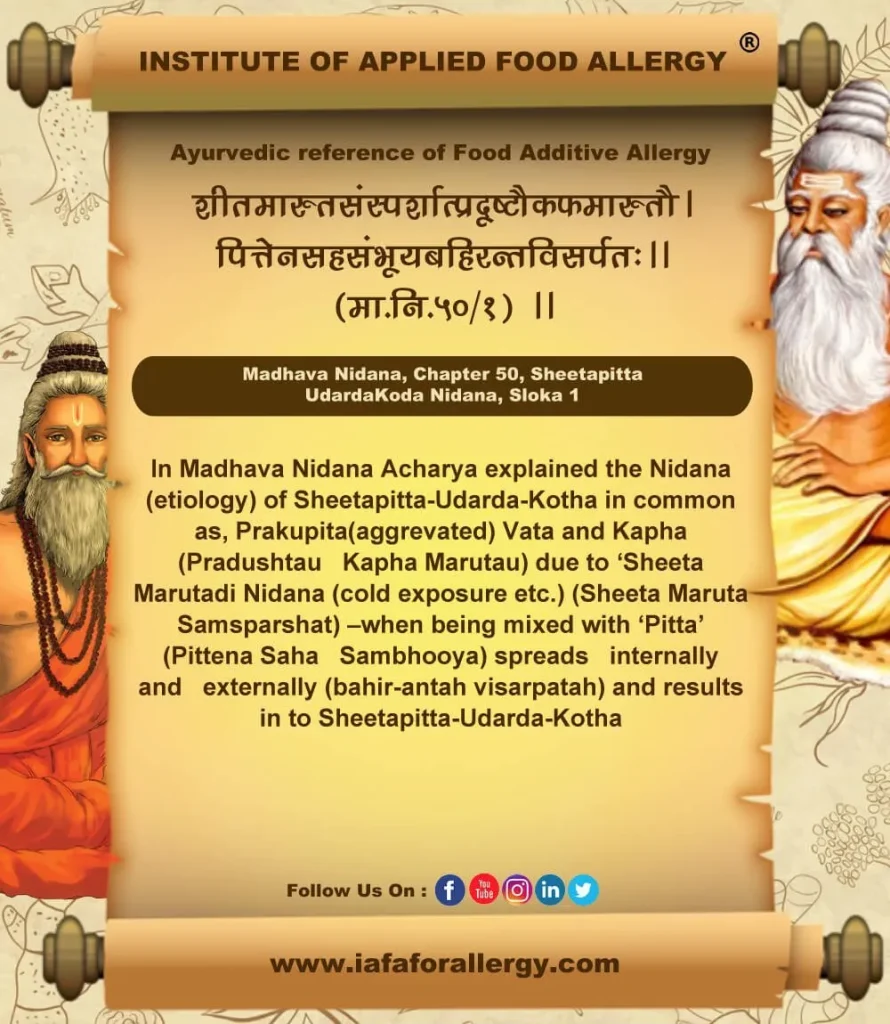

“Dr. Gupta’s IAFA is committed to bring in a change through Ayurveda in the way people perceive health care. Institute of Applied Food Allergy® ensures that we take care of all your health needs”.
Your Health. Our Mission!!! Reach Dr. Gupta’s IAFA
– Dr. Sahil Gupta (B.A.M.S., M.H.A.)
Ayurvedic Allergy Specialist
CEO & Founder of IAFA®
At last, Easier Food Additive Allergy Management

Trusted by
More than 90,000 Patients

Convenient
at-Home Treatments

9.2 / 10
Customer Satisfaction Score
Ayurvedic Treatment for Food Additive Allergy
Acharya Chakra dutta has clearly and systematically described the Shamana Chikitsa of Sheetapitta giving considerable importance to Doshagati (transit of doshas). He has advised that the individuals suffering from Sheetapitta can be given either Sheeta or Ushna aahara and Paniyas with due consideration to Doshagati. Acharya Bhavaprakasha has described Sodhana (Purificatory), Shamana (Palliative) and Bahi Parimarjana Chikitsa (External therapies) in Sheetapitta.
Internal Medicines for Food Additive Allergy
- Avipathy choornam
- Tikthakam ghritam
- Haridrakhandam
- Indukantham ghritam
- Triphala guggulu
- Guduchyadi kashayam
- Patolakaturohinyadi kashayam
- Navakarshika Guggulu
- Trikatu with Sharkara
- Yavani with Vyosha andYavakshara
- Aardraka Rasa with Purana Guda
External Therapies for Food Additive Allergy
- Abhyanga (oleation) with Kshara, lavana, taila
- Parisheka with Ushnambu (hot water)
- Lepa (anoinment) with Durva and Nishi
Purificatory Therapies for Food Additive Allergy
- Vamana
- Virechana(Specialtreatment/ Vishesha Chikitsa)
Single Herbs Used in Food Additive Allergy – As Per Ayurveda
- Katuki (Picrorhiza kurroa)
- Nishotah (Operculina turpethum)
- Amrita (Tinospora cordifolia)
- Triphala (Phyllanthus emblica, Terminalia chebula, Terminalia bellirica)
- Haridra (Curcuma longa)
- Nimba (Azadirachta indica)
Diet in Food Additive Allergy
Pathya (Do’s)
- Avoid consuming any food additives, which you know will cause problems for you.
- Read ingredient lists on all food labels carefully.
- Be sure you know the different ways an additive is named. (For example, BHA in place of butylated hydroxyanisole).
- Find out whether there are other additives, which are in the same “family” or similar to the additives you cannot use. Avoid these as well.
Apathya (Don’ts)
- Avoid foods which are Guru (Heavy to digest), excess Spicy and Sour.
- Dugdhajanya Aahar (Dairy Products).
- Madya (Alcohol).
- Sheet Jala pana (Cold Water).
- Virudha Aahar (Wrong Food Combinations)
Yoga Therapy for Food Additive Allergy
Yoga therapy is extremely beneficial to treat Food and Additive allergy since there is an underlying psychological component in many of the diseases. Yogasanas and pranayama are more beneficial to the patients.
Postures include:-
- Surya Namaskara
- Halasana
- Matsyasana
- Trikonasana
- Bhujangasana
Pranayama:-
- Bhastrika

Frequently Asked Questions
Question: What isFood Additive Allergy?
Answer: Food additives are substances added to food to preserve flavour or enhance its taste, appearance, or other qualities. These can produce adverse reactions in our body, making us allergic to those group of additives.
Question: What are the causes of Food Additive Allergy?
Answer: The cause of this allergy depends on the type of the additive which includes Tartazine, Carmine, Benzoates, Antioxidants etc.
Question: What is the Ayurvedic treatment for Food Additive Allergy?
Answer: Ayurvedic management depends on the severity of the symptoms and both purificatory and palliative treatment can be chosen depending upon the condition of the patient.
Dr. Gupta’s IAFA is committed to bring in a change through Ayurveda in the way people perceive health care. IAFA ensures that we take care of all your health needs.
Your Health. Our Mission!!! Reach Dr. Gupta’s IAFA
Was this Page Helpful?
So IAFA Root-Cause Treatment of Your Food Additive Allergy is Just 3 Steps Away!

01. Connect With Us
Share your history of illness or Book your appointment

02. Consult With Us
Dr. Gupta a certified Ayurvedic Allergist Consultant

03. Root Cause Treatment
Get an accurate diagnosis, medicines, diet & lifestyle change
Food Additive Allergy – Case Studies
Real Case Studies of Successfully Treated Patients from All Around the World by IAFA Ayurveda®
-
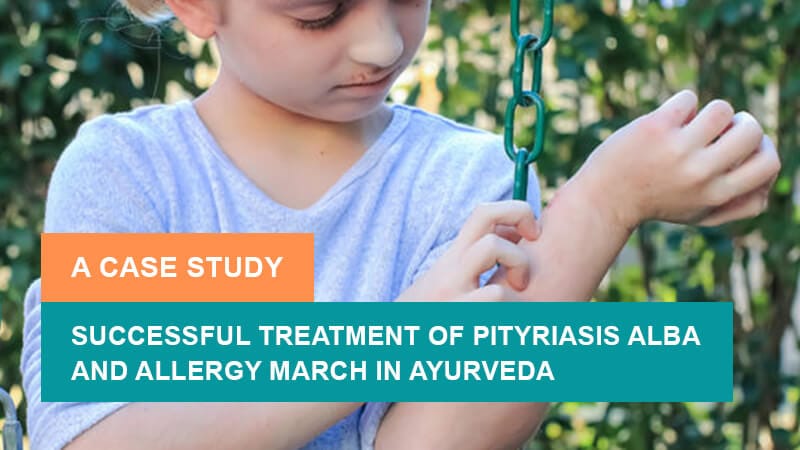
Successful Treatment of Pityriasis Alba and Allergy March in Ayurveda – A Case Study
It is a case study about successful treatment of Pityriasis Alba and…
-

Successful Treatment of Gallstones (Cholelithiasis) with Ayurvedic Medications – A Case Study
It is a case study about the successful treatment of Gallstones (Cholelithiasis)…
-
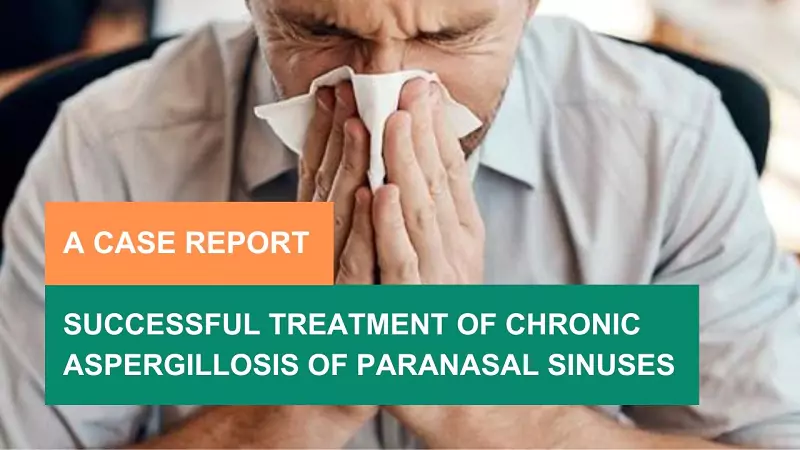
48-Year-Old Male Patient Got Relief from Chronic Aspergillosis of Paranasal Sinuses – A Case Study
Fungal infections can be treated with a high success rate by various…
-
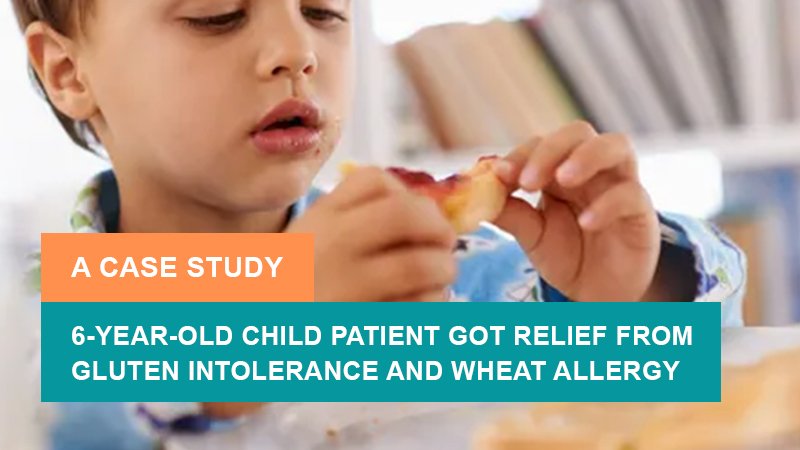
6-Year-Old Child Patient Got Relief from Gluten Intolerance and Wheat Allergy – A Case Study
It is a case study of a 6-year-old Child Patient who got…


